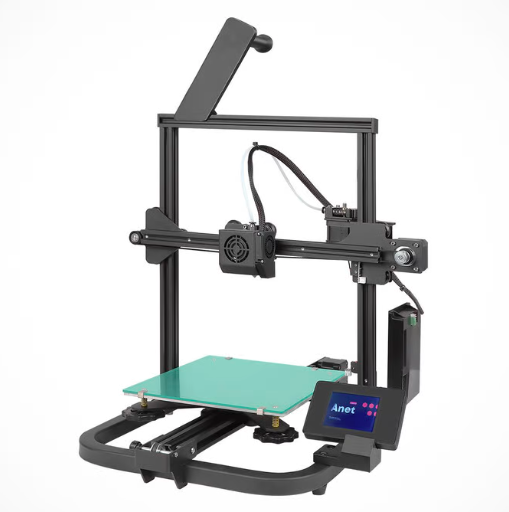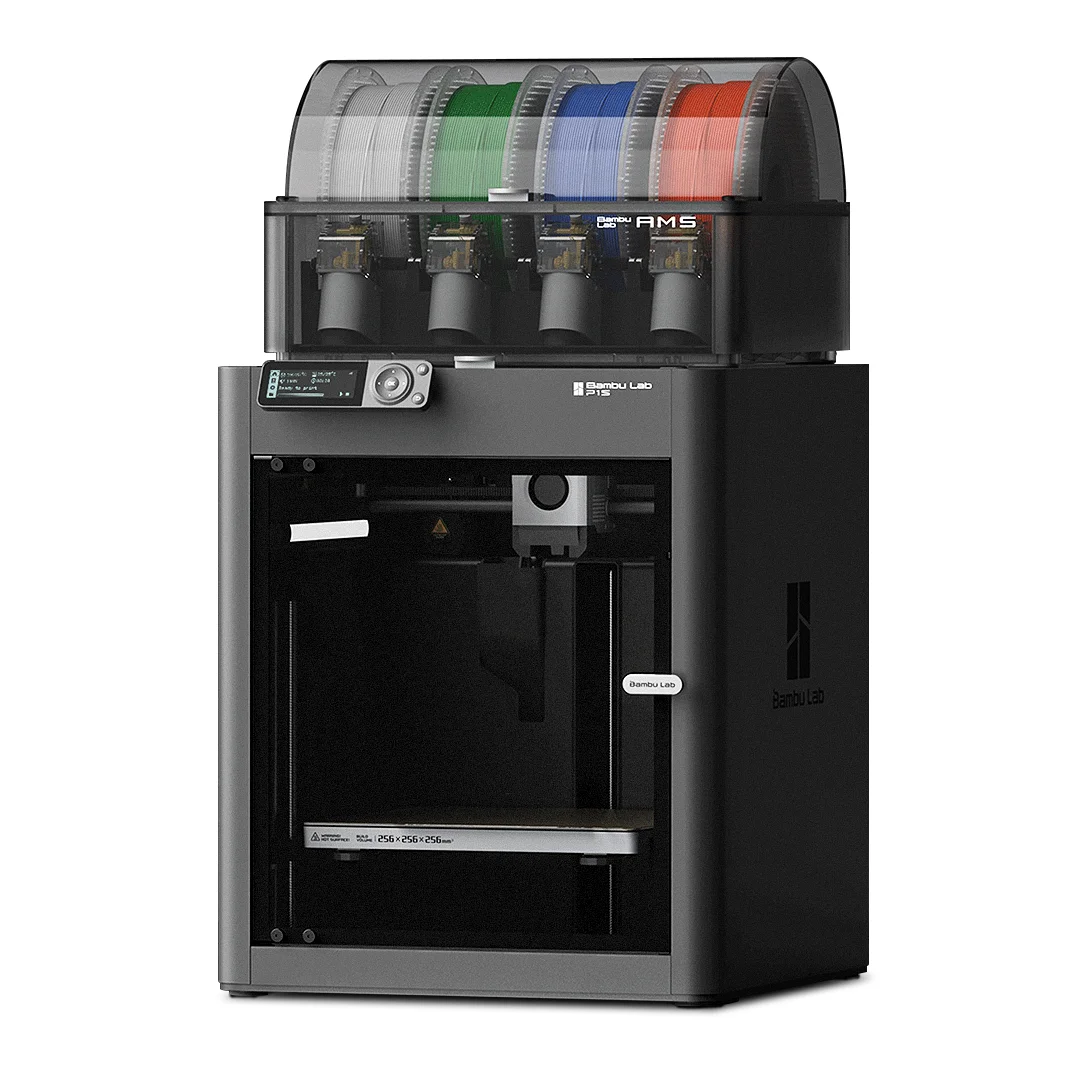Compare A8 V2 vs P1S
Comparison between the best 3D printers
Choose the best 3D printer at the best price. The cheapest 3D printers are here.
Buy a 3D printer here with 3D Fila.
 |
 |
|
| Model | A8 V2 |
P1S[BUY P1S] |
| Printing Material | Filament | Filament |
| Buy Filament for Anet A8 V2 | Buy Filament forBambu Lab P1S | |
| Estimated price | $129,00 | $949,00 |
| Manufacturer | Anet | Bambu Lab |
| Release Year | 2021 | 2023 |
| Print Volume [mm] | 220x220x250 | 256x256x256 |
| Printer Size [mm] | 428x441x486 | 389x389x458 |
| Weight [kg] | 6,2 | 12,95 |
| Power Loss Recovery | NO | YES |
| Enclosed printer | NO | YES |
| Bed Leveling | Manual | Automatic |
| Filament End Sensor | NO | YES |
| Bed type | Heated | |
| Power supply system | Bowden | Direct Drive |
| Standard nozzle | 0,4 | 0,4 |
| Maximum Nozzle Temperature [°C] | 230 | 300 |
| Maximum Bed Temperature [°C] | 100 | |
| Maximum printing speed [mm/s] | 150 | 500 |
| Filament holder | YES | YES |
| Camera for supervision | NO | NO |
| Recommended filaments | PLA | PLA, PETG, TPU, PVA, PA, PA-CF, Nylon, PC |
| Recommended slicers | Cura, Simplify, Slic3r, IdeaMaker | Bambu Studio, Super Slicer, Cura, Prusa Slicer, Orca |
| Maximum Resolution [mm] | 0,1 | 0,1 |
| Processor | Quad ARM A7 1.2 GHz | |
| Display | Display touchscreen 2,8'' | Touchscreen 5'' |
| Power Supply | 110/220V / 250W | 350 W |
| Connectivity | SD / USB | Wifi, Bambu bus, Cartão SD |
| Operating systems | Windows, Mac, Linux | Windows, Linux, Macbook |
| Date of registration in the system | 2022-11-10 | 2024-04-11 |
| Release date | 2021 | 2023 |
| Extra features | The Anet A8 V2 is a Cartesian-XZ type 3D printer with a build volume of 220 x 220 x 250 mm, Ender 3 design and V-slot assembly. It has a 32-bit motherboard and touchscreen interface, promising ease of use. It uses open source firmware and has thermal failure protection. It stands out for its cable organization and the absence of a heated bed, focusing on energy savings and PLA printing. It comes with an external power adapter, aiming at greater safety, especially for beginners and educational use. | The Bambu Lab P1S stands out for its out-of-the-box practicality, eliminating the need for manual adjustments with automatic calibrations such as bed leveling and vibration compensation. It features multicolor printing capability through the AMS system, allowing up to 16 colors when connecting four AMS units. With an advanced control algorithm, the P1S offers fast printing speeds without sacrificing quality. Equipped with modern features such as filament end sensor, semi-automatic belt tension, direct extruder, welded frame and all-metal hotend, along with a fully enclosed chamber, the P1S promotes a superior printing experience, supporting a wide range of materials. |
| Support for multiple colors and materials (AMS and CFS) | NO | YES |
Notes * |
||
| Cost-benefit | 6 / 10 | 7 / 10 |
| Hardware | 0.5 / 10 | 5.6 / 10 |
| Tela | . | . |
| Print volume | 3 / 10 | 4 / 10 |
| Performance | 1 / 10 | 4 / 10 |
| [BUY P1S] |
Conclusion |
| In comparing the Anet A8 V2 and the Bambu Lab P1S, it's clear that both printers cater to different user needs and budgets. The Anet A8 V2, with its significantly lower price point, is designed for budget-conscious users, particularly beginners and educational settings. It offers basic features, such as manual bed leveling and a limited print volume, which may appeal to those looking to start their 3D printing journey without a hefty investment. However, its lack of advanced features like power loss recovery, an enclosed chamber, and automatic calibration means that it may require more hands-on management and patience during the printing process. On the other hand, the Bambu Lab P1S, while considerably more expensive, provides a wealth of advanced features that enhance usability and performance. With automatic bed leveling, a fully enclosed print chamber, and the ability to handle a variety of filament types, this printer is ideal for experienced users or those who intend to produce high-quality prints with minimal troubleshooting. Its rapid printing capabilities and advanced technology position it as a powerful tool for serious makers and professionals. Ultimately, the choice between these two printers should be guided by the user's experience level, intended use, and budget. While the Anet A8 V2 offers an accessible entry point into the world of 3D printing, the Bambu Lab P1S stands out as a robust solution for those seeking higher performance and versatility in their printing projects. |

